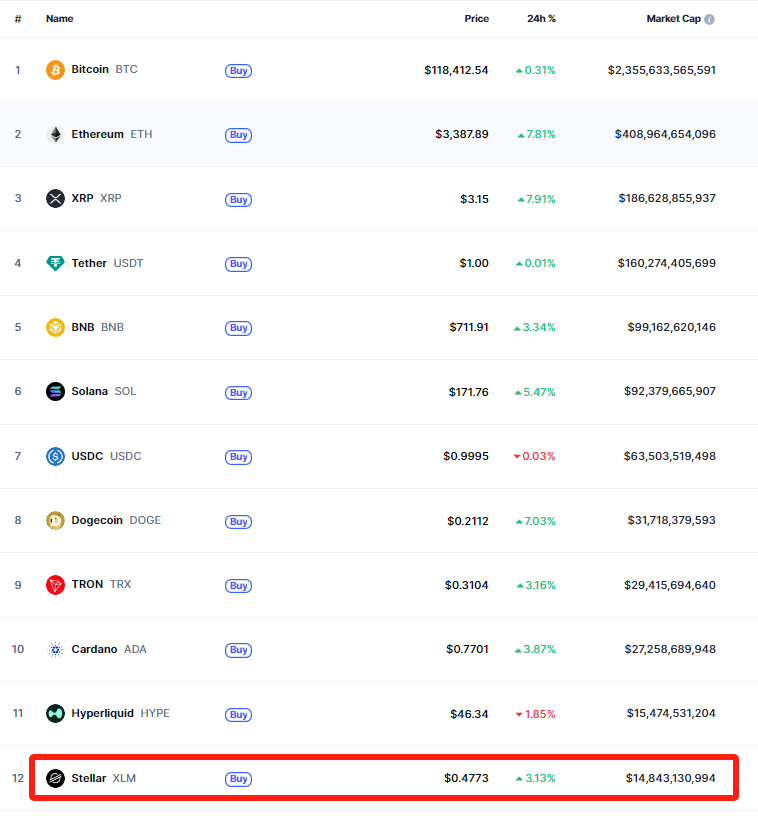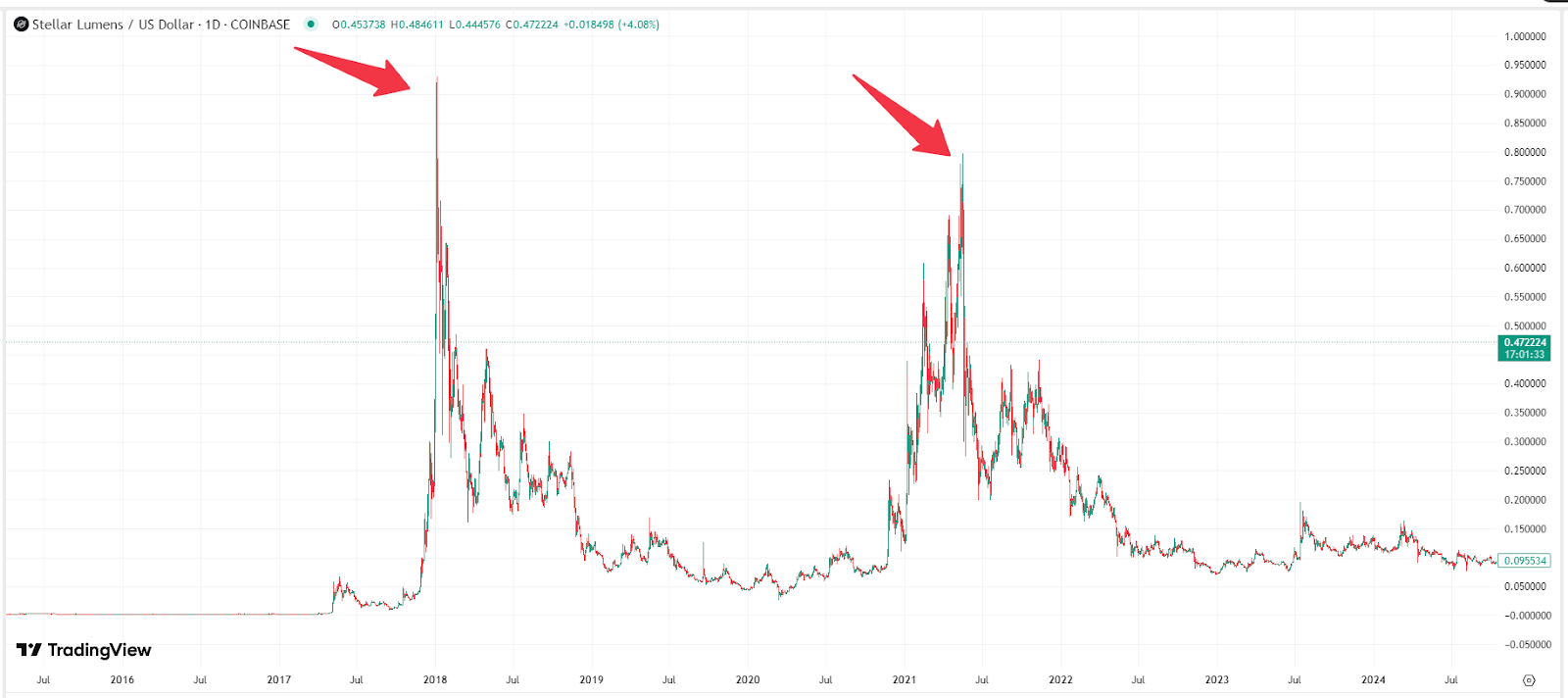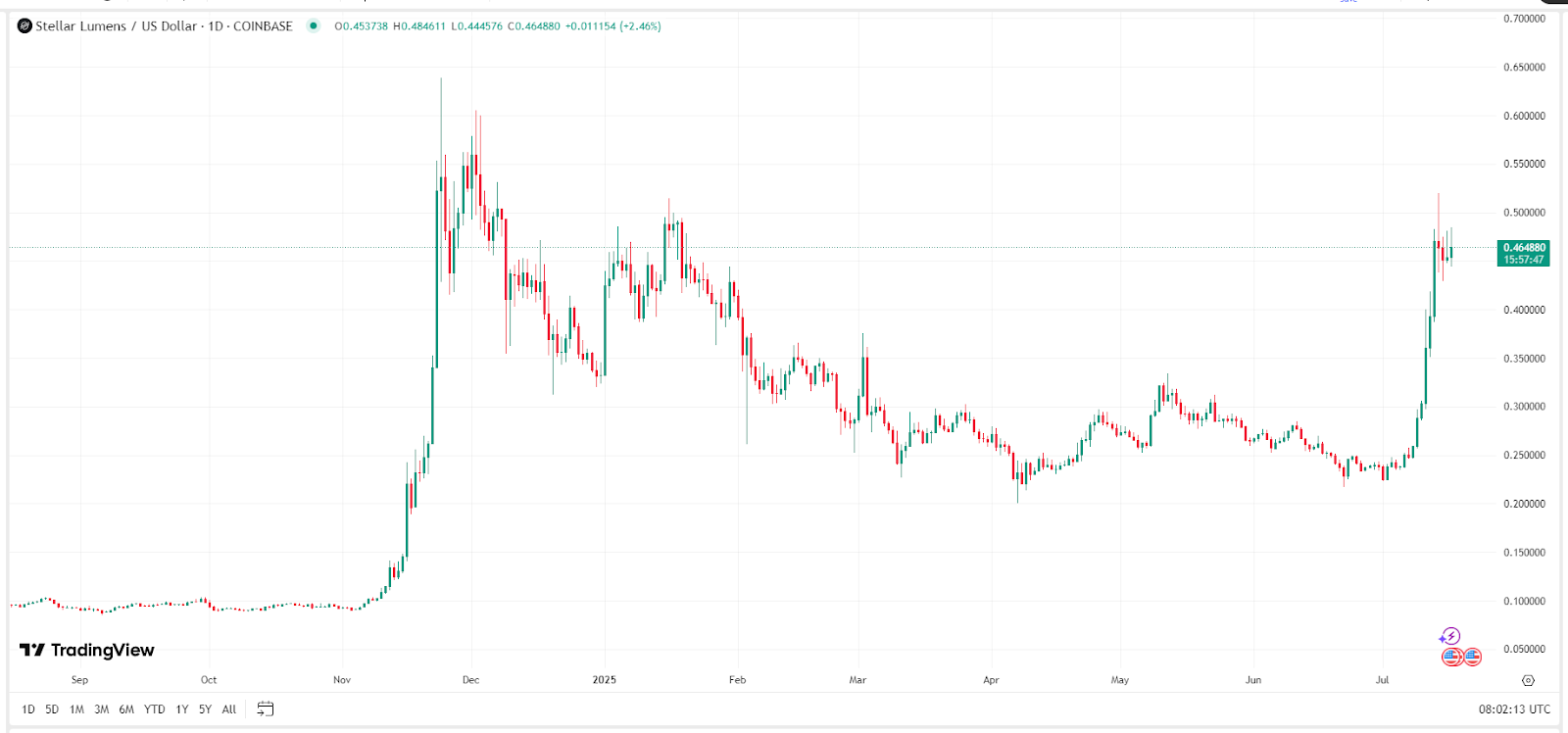What Is Stellar (XLM), and Why Did It Surge Over 110% in Just 7 Days?
Introduction
TradingKey – On July 8, 2025, Stellar Lumens (XLM) kicked off a dramatic rally, soaring from $0.24 to $0.51 in just seven days, marking a 110%+ gain and becoming one of the most explosive performers in the crypto market.
But what exactly is Stellar Lumens? What factors drove its price hike? What does the future hold? These questions are crucial for investors. This article will explore these topics in depth.
What Is Stellar (XLM)?
Stellar Lumens (XLM) is the native token of the Stellar Network, launched in 2014 by Jed McCaleb, co-founder of Ripple (XRP). Originally designed to simplify cross-border payments, Stellar has evolved into a key infrastructure for central bank digital currencies (CBDCs) and financial inclusion.
Stellar vs. Ripple: Key Differences
Stellar (XLM) | Ripple (XRP) | |
|---|---|---|
Founder | Jed McCaleb (2014 fork from Ripple) | Ripple Labs (2012) |
Focus | Emerging markets, CBDC bridge | Interbank settlement |
Governance | Community-driven, open-source | Ripple Labs controls 80% of validator nodes |
Smart Contracts | Supports WASM contracts | Limited to basic payments |
Transaction Speed | ~1.2 seconds | ~3–5 seconds |
On-chain Features | Native stablecoins, built-in DEX, asset tokenization | Fewer features |
Regulatory Risk | Never sued by SEC | Won partial SEC lawsuit, still unresolved |
Stellar’s Market Position
As of July 17, according to CoinMarketCap, Stellar has a total supply of 50 billion XLM, with 31 billion in circulation. This gives a circulation rate of 62%. The total market cap is $14.8 billion, accounting for 0.39% of the total market, ranking it twelfth among cryptocurrencies.

Top Twelve Cryptocurrencies by Market Cap, Source: CoinMarketCap
Despite its strong fundamentals, Stellar’s DeFi footprint remains modest:
- TVL (Total Value Locked): $140 million
- Share of global DeFi TVL: ~0.1%
- Comparison: Far behind Ethereum (ETH), Solana (SOL), and TRON (TRX)

TVL of Stellar Network, source: DefiLlama
Historical Price Trends of XLM
Initial Launch in 2014
XLM was launched in 2014 with a relatively low price. It hovered around a few cents for a good long time. During this period, its brand awareness was minimal, with a rather limited trading volume. This situation continued until 2017.

XLM Price Trend Chart (2014-2024), Source: TradingView
First Bull Market
In 2017, XLM entered into its first bull market. The price rose from about $0.002 at the beginning of the year to nearly $0.90 by December. This significant increase attracted many investors. However, in early 2018, the crypto market shifted into a bear phase. XLM's price followed suit, dropping to around $0.10 by the end of 2018. From 2019 to 2020, XLM fluctuated between $0.05 and $0.20.
Second Bull Market
In 2021, the crypto market experienced another bull run. XLM reached a peak of about $0.80 in May, though it remained below the previous bull market's high. In 2022, the market turned bearish again, and XLM's price continued to decline. By 2023-2024, it fluctuated between $0.10 and $0.20.
Why Did XLM Suddenly Surge?
In November 2024, Trump defeated Kamala Harris and won the U.S. presidency again. This event led to a surge in the entire cryptocurrency market. XLM's price jumped from around $0.09 to a high of $0.63, marking a 600% increase. After this peak, XLM's price began to decline, settling around $0.20.
On July 7, 2025, the Stellar Development Foundation released Stellar Core version 23.0.0rc2. This network upgrade aimed to improve the ecosystem's scalability. Following this announcement, XLM's price soared, gaining over 110% in just seven days.

XLM Price Trend Chart (2024-2025), Source: TradingView
As of July 17, XLM’s price was around $0.45, with a current price of $0.46. Despite some stagnation, several potential catalysts could boost its price. These include new U.S. cryptocurrency legislation, Federal Reserve interest rate cuts, the rise of altcoin spot ETFs, and ongoing trends in asset tokenization and stablecoins. With these positive factors, XLM could potentially break its historical high of $0.90 or even exceed it.
End
Stellar isn’t just another altcoin — it’s a blueprint for a next-generation financial system. From remittances and stablecoin settlement to smart contracts and CBDC infrastructure, Stellar is redefining what “on-chain capital markets” can look like.
This rally reflects not just technical progress, but growing institutional confidence in Stellar’s long-term role in global finance.



